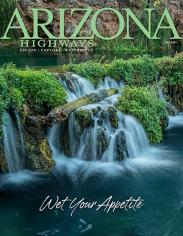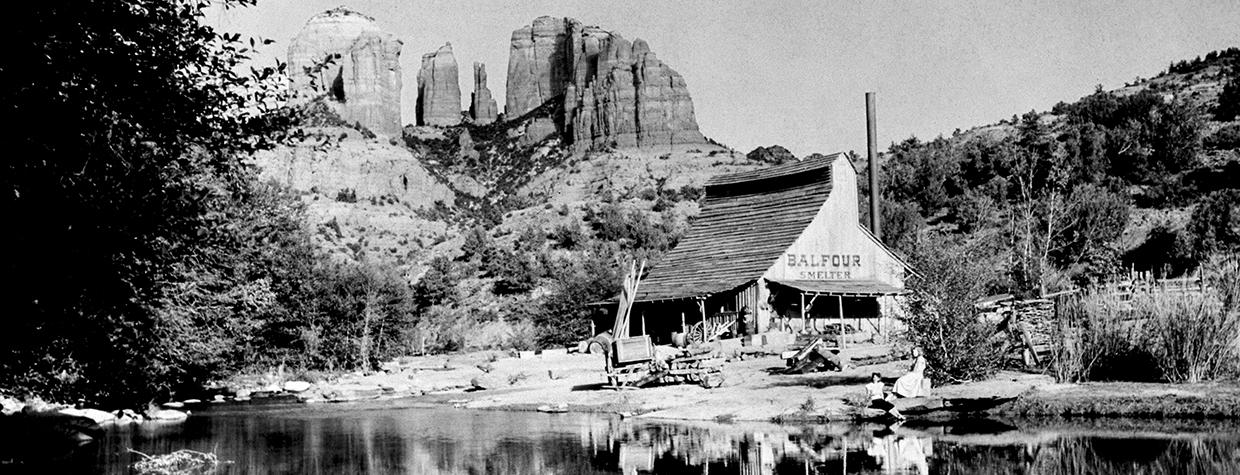Nineteen seventy-three. That was the unofficial end of the movie business in Sedona. There were a few other flicks in subsequent years — The Quick and the Dead, National Lampoon’s Vacation — but by the mid-1970s, the show was essentially over. Growth and overdevelopment played a role in that, but there were other culprits, too. “I think the bigger reasons were financial,” says Joe McNeill, author of Arizona’s Little Hollywood. “Audience tastes had changed by the late ’60s, and there wasn’t much money to be made with Westerns anymore. In the era of The Godfather and Raging Bull, Sedona’s red rocks had stereotyped [the area] as a background for modest cowboy pictures — and it had become a lot cheaper to shoot them in Spain.”
Decades earlier, however, the scene was very different. As Bob Bradshaw wrote in our May 1959 issue: “An average of two major motion pictures a year have been filmed near Sedona during the past fifteen years.”
“There are many reasons Hollywood studios come to Sedona,” he added, “but the main reason is the variety of photogenic scenery available. There is beautiful rushing Oak Creek, high timbered mountains and, at lower elevations, even arid desert. The red rock canyons and unusual rock formations provide locations for almost any scene in any Western story. One director who has made several pictures in the area summed up this aspect by saying: ‘We like to come to Sedona because all of the scenery is interesting. No matter which way you point the camera, you find a spectacular background.’ ”
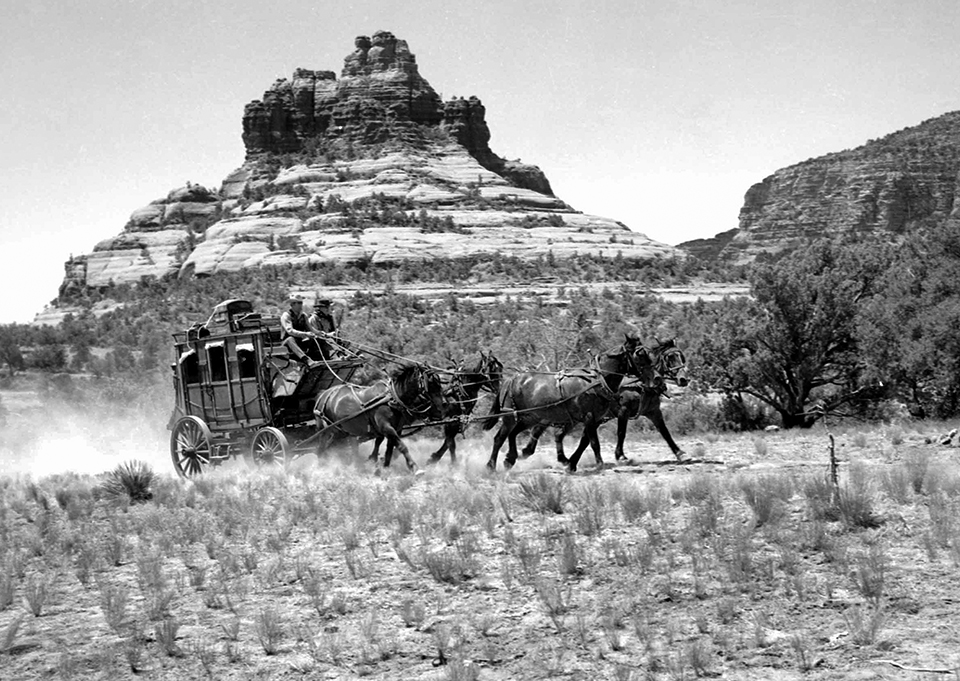
Although Mr. Bradshaw wrote the story for us, he was a photographer, not a writer, by trade. He also had firsthand knowledge of the movie industry in Sedona. Between 1946 and 1959, when his story was published, he worked as an extra, stand-in, riding double or carpenter in every movie filmed in the area.
“Some of the most interesting work I’ve done with picture companies,” he wrote, “is finding locations to fit the scenes in the story and supplying horses and equipment such as wagons and buggies. Companies like to hire as many wagons, buggies and horses as possible on location instead of bringing them from Hollywood. Cast horses (the ones the stars in the picture ride) are usually brought from Hollywood. Occasionally, local horses are used for the stars to ride and quite often local horses are used to double the cast horses, just as an actor’s double will substitute for the actor in the long shots and fast chases. In this way, the special horse chosen for the actor is not used unnecessarily and is saved for the close-ups. The horses the local extras ride are usually not fancy-colored, but just solid-colored horses like bays, browns and sorrels. The reason for this is that the actor’s fancy-
colored horse will stand out and will help to identify the actor in the long shots and fast chases. ... All of the trick horses are brought from Hollywood.”
Mr. Bradshaw ended his piece with this hopeful conclusion: “And now you TV viewers will see the area as background in TV Westerns. 26 Men, being filmed in Arizona, has already shot some scenes in the area. You can’t beat pretty scenery for Westerns.”
Unfortunately, 26 Men, which was based on the real-life experiences of the Arizona Rangers, lasted only two seasons. With hindsight, its demise was a precursor of worse things to come: that point in the ’70s when all of the film crews would pack up and move on, leaving behind only fond memories, books and magazine pieces, and an archive of old photographs, including those from the personal collection of Bob Bradshaw.
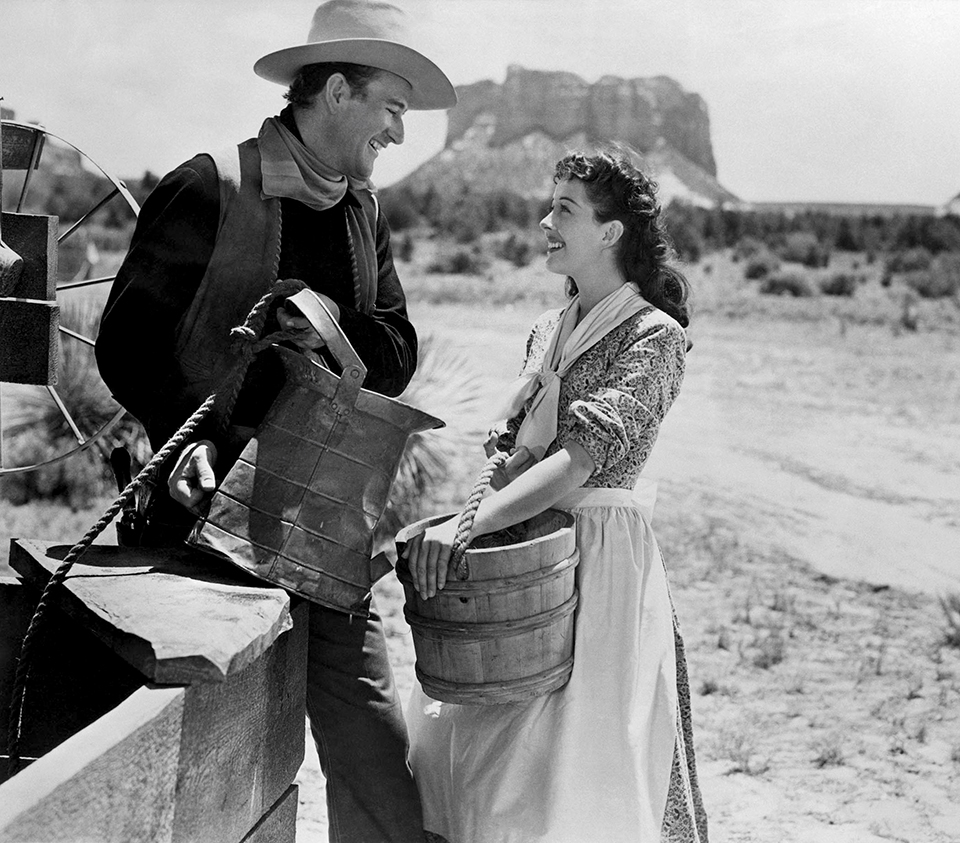
Sedona Movie History 1941 - 1957
In a story titled They Still Go Thisaway and Thataway in the Red Rock Country, which ran in our May 1959 issue, we published a list of some of the movies that had been filmed in and around Sedona prior to 1960:
PARAMOUNT
California (1947): Ray Milland and Barbara Stanwyck
Desert Fury (1947): Lizabeth Scott, John Hodiak and Burt Lancaster
Albuquerque (1948): Randolph Scott and Barbara Britton
Copper Canyon (1950): Ray Milland
The Redhead and the Cowboy (1951): Glenn Ford and Rhonda Fleming
Flaming Feather (1952): Sterling Hayden, Barbara Rush and Victor Jory
REPUBLIC
Angel and the Badman (1947): John Wayne and Gail Russell
The Fabulous Texan (1947): Wild Bill Elliott and John Carroll
Hellfire (1949): Wild Bill Elliott and Marie Windsor
Johnny Guitar (1954): Joan Crawford, Sterling Hayden and Mercedes McCambridge
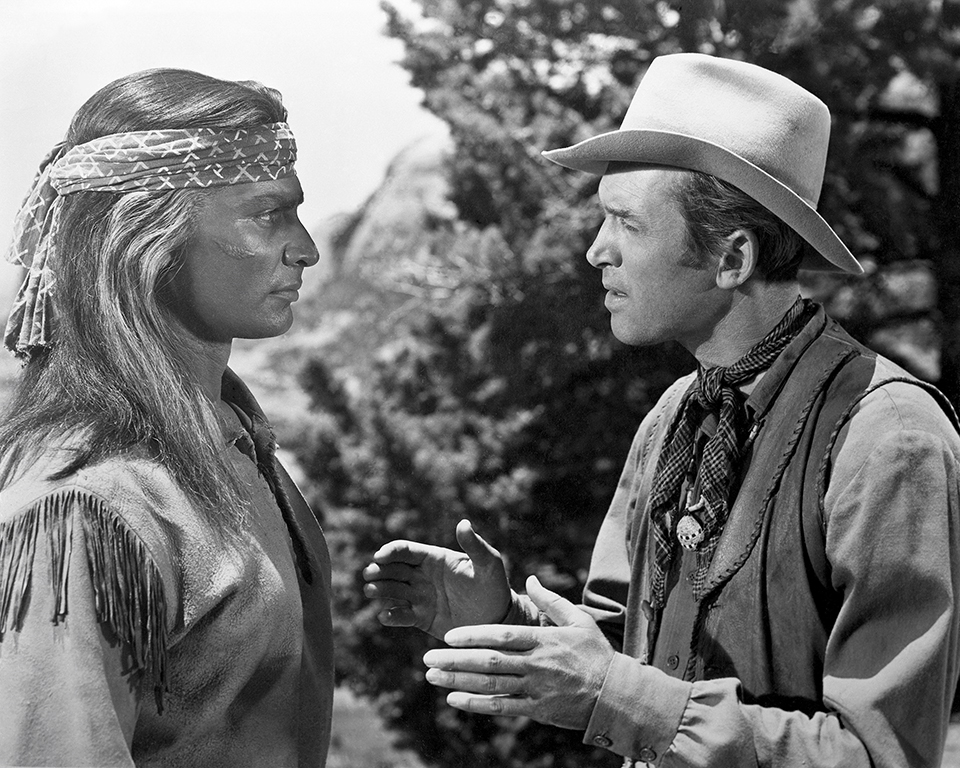
COLUMBIA
Relentless (1948): Robert Young, Marguerite Chapman and Willard Parker
The Strawberry Roan (1948): Gene Autry
Gun Fury (1953): Rock Hudson and Donna Reed
3:10 to Yuma (1957): Glenn Ford, Felicia Farr and Van Heflin
WARNER BROS.
Cheyenne (1947): Dennis Morgan and Jane Wyman
Drum Beat (1954): Alan Ladd and Charles Bronson
RKO
Blood on the Moon (1948): Robert Mitchum, Walter Brennan, Robert Preston and Barbara Bel Geddes
Station West (1948): Dick Powell, Jane Greer and Agnes Moorehead
The Half-Breed (1952): Robert Young and Jack Buetel
20th CENTURY FOX
Leave Her to Heaven (1945): Gene Tierney, Cornel Wilde and Jeanne Crain
Broken Arrow (1950): James Stewart, Jeff Chandler and Debra Paget
Pony Soldier (1952): Tyrone Power, Thomas Gomez and Cameron Mitchell
The Last Wagon (1956): Richard Widmark, Felicia Farr and Susan Kohner
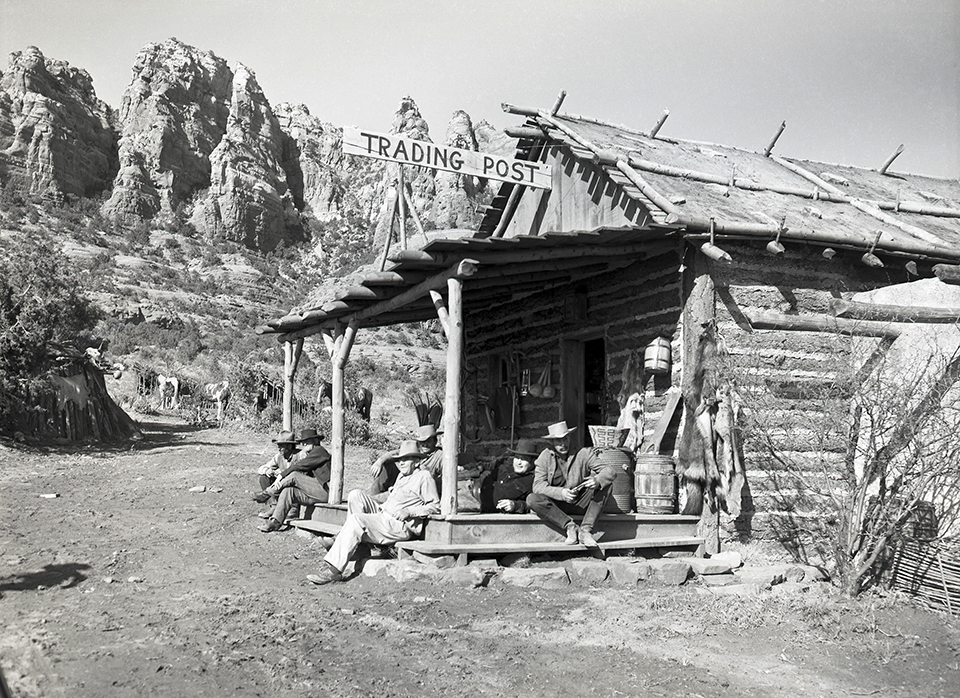
ALLIED ARTISTS
Shotgun (1955): Sterling Hayden,Zachary Scott and Yvonne De Carlo
MGM
Billy the Kid (1941): Robert Taylor and Brian Donlevy
OTHERS
Comanche Territory (1950): Maureen O’Hara and Macdonald Carey
The Eagle and the Hawk (1950): John Payne and Dennis O’Keefe
Apache (1954): Burt Lancaster and Jean Peters
Stranger on Horseback (1955): Joel McCrea, Miroslava and Kevin McCarthy
